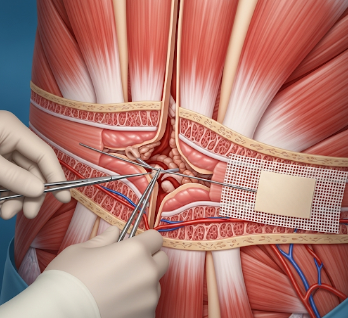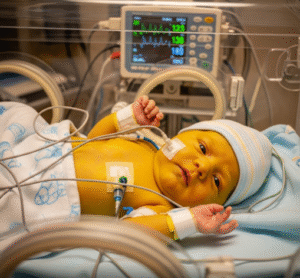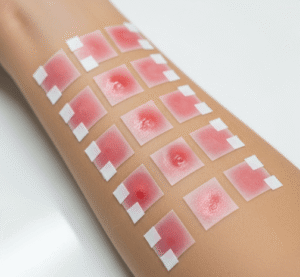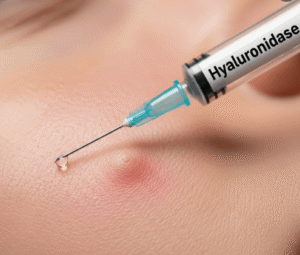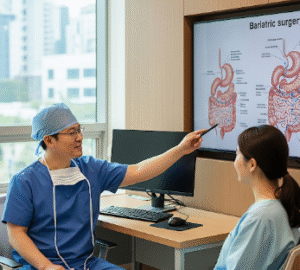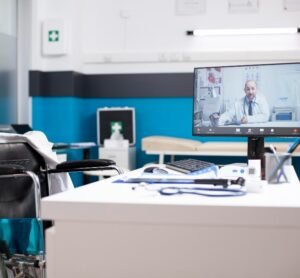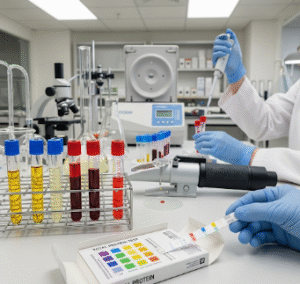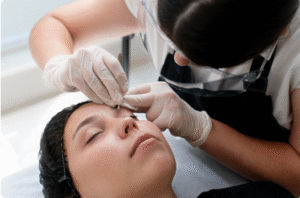Overview
Open incisional hernia repair is a surgical procedure to correct hernias that develop at the site of a previous abdominal surgery. These hernias occur when tissue or intestine pushes through a weakened area of the abdominal wall, causing bulging, discomfort, or complications such as obstruction or strangulation.
South Korea provides advanced surgical care for incisional hernias in specialized general and abdominal surgery centers, using modern mesh techniques, meticulous tissue repair, and expert post-operative management to ensure durability and reduced recurrence.
What is Open Incisional Hernia Repair?
Open incisional hernia repair involves making an incision over the hernia site to access the weakened tissue and repair the defect. Techniques commonly used include:
✔ Primary repair: Suturing the edges of the abdominal wall defect together (rarely used alone for large defects).
➔ Mesh repair: Placement of a synthetic or biologic mesh to reinforce the abdominal wall.
● Component separation: Advanced technique for large or complex hernias.
★ Combination approaches: Mesh plus tissue repair for stronger, long-lasting results.
Open repair is preferred when hernia size, scar tissue, or anatomy makes laparoscopic repair difficult or risky.
What are the Benefits?
Open incisional hernia repair offers several advantages:
✔ Reinforces the abdominal wall, reducing the risk of recurrence.
➔ Relieves pain and discomfort caused by hernia bulging.
● Prevents serious complications such as bowel obstruction or strangulation.
★ Allows direct visualization of scar tissue and defect for precise repair.
➤ Can address large or complex hernias that cannot be repaired laparoscopically.
Procedure Details
1) How should I prepare for Open Incisional Hernia Repair?
Preparation ensures safety and better outcomes:
✔ Medical evaluation: Blood tests, imaging (CT scan) to assess hernia size and contents.
➔ Medication review: Blood thinners may need to be paused.
● Fasting: Usually 6–8 hours prior to general anesthesia.
★ Patient counseling: Discuss surgical technique, risks, recovery, and mesh options.
➤ Lifestyle adjustments: Smoking cessation, weight management, and optimizing chronic conditions.
2) What happens during the procedure Open Incisional Hernia Repair?
The surgery is performed under general anesthesia and typically lasts 1–3 hours depending on hernia size and complexity:
✔ Incision: Directly over the hernia site.
➔ Hernia sac identification: The protruding tissue or intestine is carefully dissected.
● Reduction of hernia contents: Intestine or tissue returned to abdominal cavity.
★ Repair of defect: Abdominal wall reinforced with sutures and/or mesh.
➤ Closure: Layers of tissue closed, and incision sutured with sterile dressing applied.
Korean surgeons often use advanced mesh materials and fixation techniques to minimize recurrence and post-op complications.
3) What happens after Open Incisional Hernia Repair?
Recovery includes wound care, activity modification, and monitoring for complications:
✔ Hospital stay: Usually 2–5 days depending on complexity and patient condition.
➔ Pain management: Analgesics or local anesthetic pumps for post-operative comfort.
● Activity restrictions: Avoid heavy lifting or strenuous activity for 4–6 weeks.
★ Wound care: Keep incision clean and monitor for infection or swelling.
➤ Follow-up: Regular visits to monitor healing, mesh integration, and abdominal wall strength.
Risks / Benefits
Possible Risks:
✔ Infection at incision site or around mesh
➔ Bleeding or hematoma formation
● Seroma (fluid accumulation)
★ Recurrence of hernia
➤ Injury to bowel or surrounding structures (rare)
Major Benefits:
✔ Durable repair of incisional hernia
➔ Relieves pain and improves abdominal wall function
● Reduces risk of life-threatening complications (obstruction, strangulation)
★ Direct repair allows precise placement of mesh and tissue reinforcement
➤ Korean hospitals provide high success rates and advanced post-operative care
Recovery and Outlook
✔ Initial recovery: 2–3 weeks for incision healing; 4–6 weeks before resuming heavy activity.
➔ Physical activity: Gradual return under guidance to prevent recurrence.
● Diet: Regular diet unless otherwise advised.
★ Long-term outcome: Most patients achieve durable repair with improved quality of life.
➤ Follow-up: Routine check-ups to assess incision, mesh, and abdominal wall strength.
When To Call the Doctor
Contact your doctor if you notice:
✔ Redness, swelling, or drainage at incision site
➔ Fever or signs of infection
● Severe or increasing pain
★ Bulging at or near the repair site
➤ Nausea, vomiting, or inability to pass stool (possible bowel obstruction)
Best Korea Option / Process
South Korea provides top-tier care for open incisional hernia repair with:
✔ Leading hospitals: Asan Medical Center, Samsung Medical Center, Seoul National University Hospital.
➔ Advanced surgical techniques: Mesh repair, component separation, and hybrid approaches.
● Experienced surgical teams: General and hepatobiliary surgeons skilled in complex hernia repair.
★ Comprehensive post-op care: Pain management, rehabilitation, and wound monitoring.
➤ Medical tourism support: Translation services, travel coordination, and follow-up care for international patients.
✅ Highlights:
✔ Open repair fixes incisional hernias through direct abdominal incision
➔ Reinforces abdominal wall using sutures and/or mesh
● Treats large, complex, or recurrent hernias
★ Risks include infection, seroma, recurrence, or rare organ injury
➤ Korean hospitals provide advanced surgical expertise, high success rates, and comprehensive recovery support

